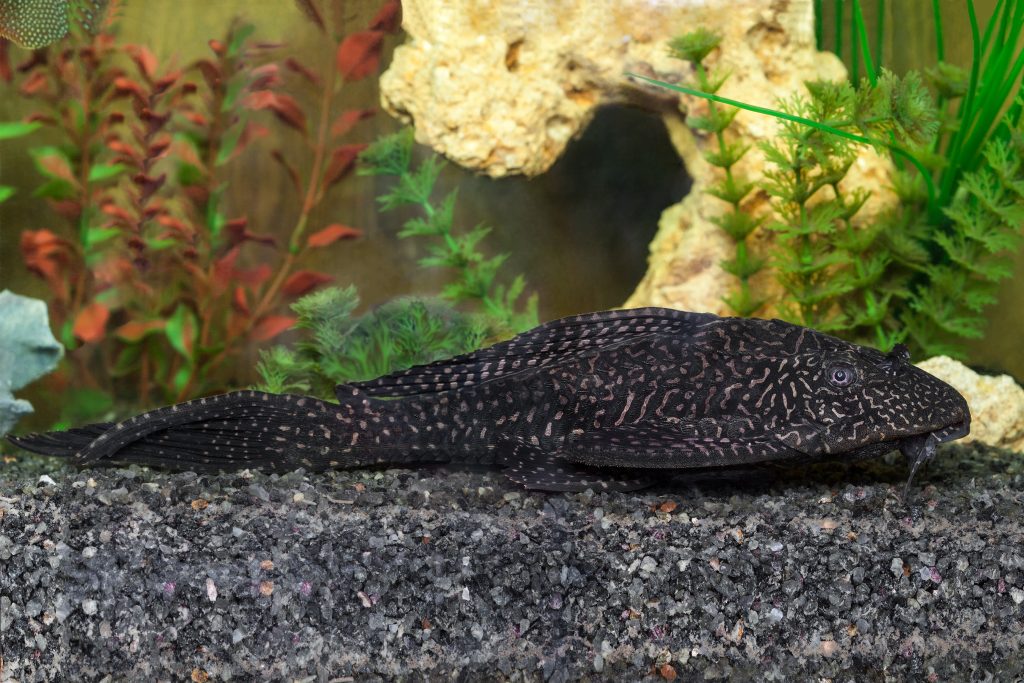Plecostomus, or plecos, are a group of armored catfish that have become a staple in freshwater aquariums due to their algae-eating habits. Originating from the rivers and tributaries of South America, these bottom-dwelling fish play a crucial role in maintaining the cleanliness and health of their aquatic environment. This guide provides detailed insights into creating a suitable habitat, diets, and breeding practices for pleco fish, ensuring they thrive in your care.
Tank Setup
Creating a conducive environment is crucial for the well-being of pleco fish. This section outlines the essentials of tank setup, including size, water conditions, and decor.
Tank Size
Plecos can grow quite large, with some species reaching up to 24 inches in length. A minimum of a 20-gallon tank is recommended for juvenile plecos, but as they grow, they may require a tank of 75 gallons or more, depending on the species.
Water Conditions
Plecos are adaptable to a wide range of water parameters but thrive best in conditions that mimic their natural habitat. A temperature range of 74°F to 80°F (23°C to 27°C), a pH level of 6.5 to 7.5, and soft to moderately hard water are ideal. Regular water changes and a reliable filtration system are necessary to maintain the quality of the water.
Decor and Hiding Spots
These nocturnal creatures prefer dim lighting and require hiding places to rest during the day. Caves, driftwood, and dense plantations provide excellent shelters for plecos. Adding these elements not only makes the tank more visually appealing but also helps in reducing stress for the fish.
Feeding
Plecos are omnivores with a strong preference for algae. However, their diet should be varied to ensure they receive all necessary nutrients.
Algae and Plant-Based Foods
While plecos will naturally graze on algae in the aquarium, their diet should be supplemented with algae wafers, spirulina, and blanched vegetables like zucchini, cucumber, and peas to ensure they get enough to eat.
Protein Sources
Offering protein in moderation is essential for a balanced diet. Occasional servings of bloodworms, brine shrimp, and sinking carnivore pellets will suffice.
Breeding
Breeding plecos in captivity can be challenging but rewarding. Understanding the breeding behavior and requirements is key to success.
Recognizing Breeding Behavior
Plecos become more territorial during the breeding season. Males prepare a nesting site, usually in a cave or a similar shelter, and entice females to lay eggs. After fertilization, males guard the eggs until they hatch.
Conditions for Breeding
Simulating the rainy season of their natural habitat can encourage plecos to breed. This can be achieved by gradually lowering the tank temperature and increasing water changes. Providing ample hiding spaces and ensuring the tank is well-oxygenated are also important.
Post-Hatch Care
Once the eggs hatch, the fry can be fed a diet of algae, powdered fish food, and crushed peas. It’s important to keep the water clean and well-oxygenated to promote healthy growth.
Health and Wellness
Observing your pleco for signs of distress or illness is vital for their long-term health. Regular check-ups, maintaining water quality, and a balanced diet are the best preventive measures against common health issues.
Common Health Issues
Plecos are susceptible to ich, fin rot, and fungal infections, typically resulting from poor water conditions or stress. Early detection and treatment are crucial to prevent the spread of disease.
Stress Reduction
Minimizing stress through proper tank setup, compatible tank mates, and stable water conditions can significantly impact the health and lifespan of pleco fish.
Conclusion
In conclusion, proper care of pleco fish requires attention to tank setup, diet, breeding practices, and health management. By understanding and catering to their needs, you can ensure these fascinating creatures lead a healthy, happy life in your aquarium. Whether you are a beginner or an experienced aquarist, following these guidelines will help you create a thriving environment for your pleco fish.

